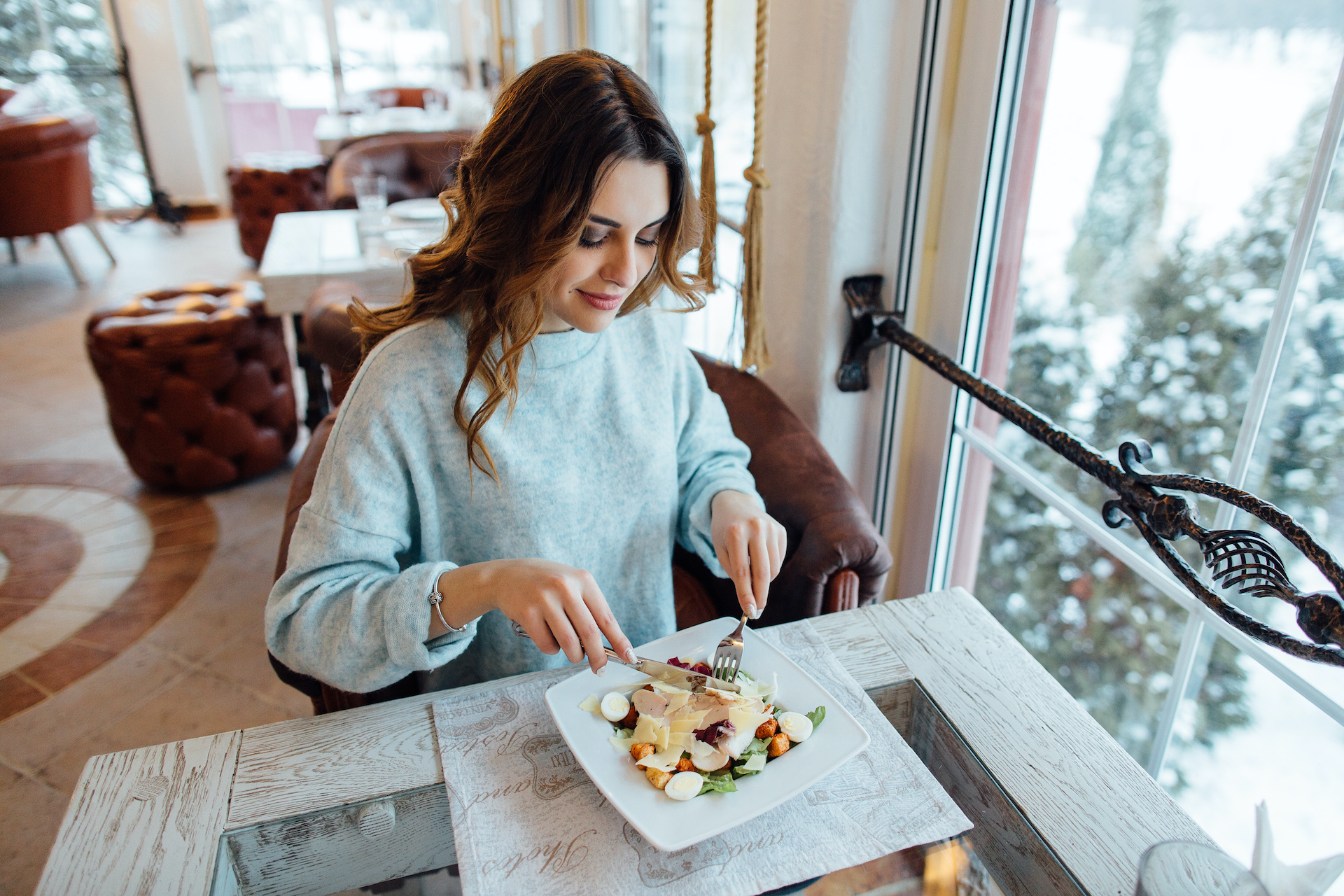Since the first few months of the pandemic in 2020, the restaurant industry has proven far more resilient than most expected. Sure, many establishments shuttered under that first wave of government regulations and change, but those that adapted and pivoted either survived or thrived.

Restaurants that made it through did so because of product, platform, or both. Food that naturally travels well—chicken wings, burritos, Chinese food—was bound to have a leg-up. But the platform is where the real winners shook out.
Smart QSR and fast-casual chains like Chipotle and Shake Shack reconfigured their strategies to lean heavily into delivery apps, digital ordering, and loyalty programs. Sit-down establishments often did the same by upping their digital chops, adding curbside pickup, and even erecting sidewalk dining parklets when dine-in returned in a limited capacity.
Now, as we enter 2022, predictions indicate a big shift back to sit-down dining. (We’ve all heard the term “pent-up demand” and, make no mistake, it’s a real thing). Though there are plenty of customers who will continue to enjoy restaurant delivery the off-premises’ percentage of sales is likely to slide.
So, what can fast-casual marketers do to bring people back to their brick-and-mortar locations?
Small eateries should focus on the fundamentals
When you aren’t a 100+ national restaurant chain with ample technology, infrastructure, and advertising dollars, you might wonder how you can compete for hearts and mouths. Thing is, as a small operation, you don’t need a grandiose commercial to sell your brand; but you also can’t ignore marketing fundamentals altogether, or you’ll send your customers running to the doors of your closest competitor.
Word of mouth, especially in COVID times, isn’t going to increase traffic like having a basic and accurate website will. So, make sure you boot up these basics before you start seeing sidewalk traffic pick up.
Claim your Google Business and Yelp profiles
Claim your free Google Business Profile page and create that Yelp profile. These are free services, and they’re being left untapped by many small eateries, simply because of a lack of resources or failure to recognize their importance.
Google’s free business profiles enable your information to show up on search and maps. (How do you expect people to show up to your restaurant if you’re literally not showing up online?). And creating a Yelp profile is crucial when many people let ratings steer their “Where do we eat?” decisions.
Note: If you already claimed your Google Business Profile, ensure all the information is correct and actively add photos, posts, and information to ensure your profile is as robust as possible. But most importantly, respond to all customer reviews.
Clean up your online NAP data
NAP stands for name, address, and phone number. Trust that customers can and will get derailed before even visiting your establishment if the number associated with your restaurant drives to someone’s home phone, or your lingering old address is sending customers to the other side of town.
Create (or refresh) a basic website
Templated website builders abound. They’re inexpensive to set up and run—and the act of adding words and images has become so plug-and-play that nearly anyone on your team can do it. If only to share your location, hours, and phone number, this step is 100% necessary.
For larger marketing budgets, it’s about doubling down on digital
Get your digital ducks in a row
Your app, loyalty program, and digital ordering solution are just as important as when restaurants were closed. If COVID didn’t give you enough of an opportunity to polish your omnichannel strategy, then the time is now. People who may have discovered your restaurant on a delivery app may now consider you for sit-down dining. But you have to maintain and iterate on that tech frequently or it will quickly become outdated, and your restaurant sales will suffer. If you know your website is going to need an overhaul every five years, for instance, start working on the new one in year three.
Focus on first-party data
When you’re doing your app and loyalty programs right, you’re amassing a treasure trove of first-party data that enables you to deliver truly personalized messaging, deepening your customer’s off- and on-premises relationship with your brand.
According to a recent article in QSR Magazine, Chipotle leverages techniques like predictive modeling to trigger purchasing journeys in new and lapsed customers. Perhaps one reason it’s accrued 24.5 million members in its loyalty program as of October 2021.
But even if your chain is a far cry from a Chipotle, creating and maintaining some level of sophistication in this arena can help you turn more one-timers into frequenters. And you don’t have to go at it alone: CRM and loyalty platforms like Punchh, Clutch, and LevelUp can help restaurants scale their programs.
Especially with tech giants moving away from cookies, first-party data will become more important and valuable than ever before.
Consistently improve customer experience
You’ve heard it before, but the customer experience can’t be underestimated—and in an era where one sour Tweet can turn thousands of customers into haters, it pays to always be on your toes as a restaurant marketer.
When it comes to dining in, start considering what innovations or alterations could create a better, more enjoyable restaurant experience. Those contactless QR codes we started using at restaurants in lieu of hard menus? The ones that bring up a PDF menu that you have to pinch and zoom to find the entree section? Not a great user experience. And certainly, an area that’s ripe for marketers to reimagine.
Think ahead about this stuff and look proactively for the solutions that’ll keep your customers coming back with a smile.
Bottom-line
Turns out, the things COVID-19 magnified for us in early 2020 are similar to what restaurant marketers must pay attention to today, as dine-in returns: You have to make digital and omnichannel marketing your everyday business and make the customer experience as frictionless as possible.
Doug Reifschneider is the CMO at Chief Outsiders, the nation’s leading fractional CMO firm focused on mid-size company growth.
© YFS Magazine. All Rights Reserved. Copying prohibited. All material is protected by U.S. and international copyright laws. Unauthorized reproduction or distribution of this material is prohibited. Sharing of this material under Attribution-NonCommercial-NoDerivatives 4.0 International terms, listed here, is permitted.














